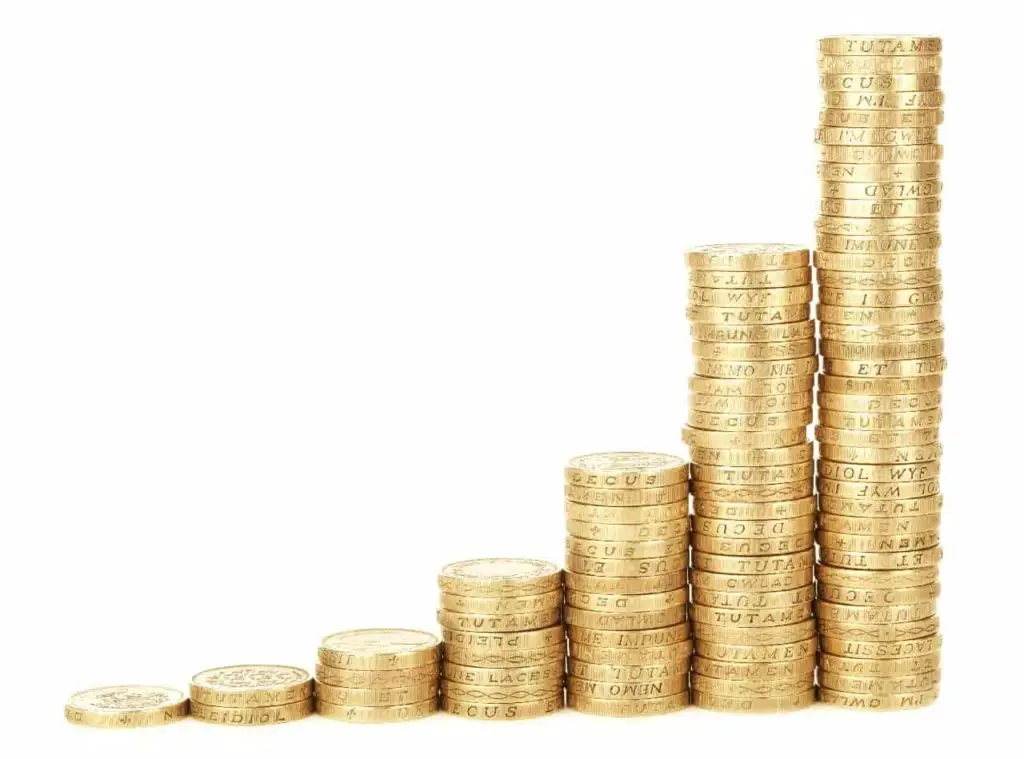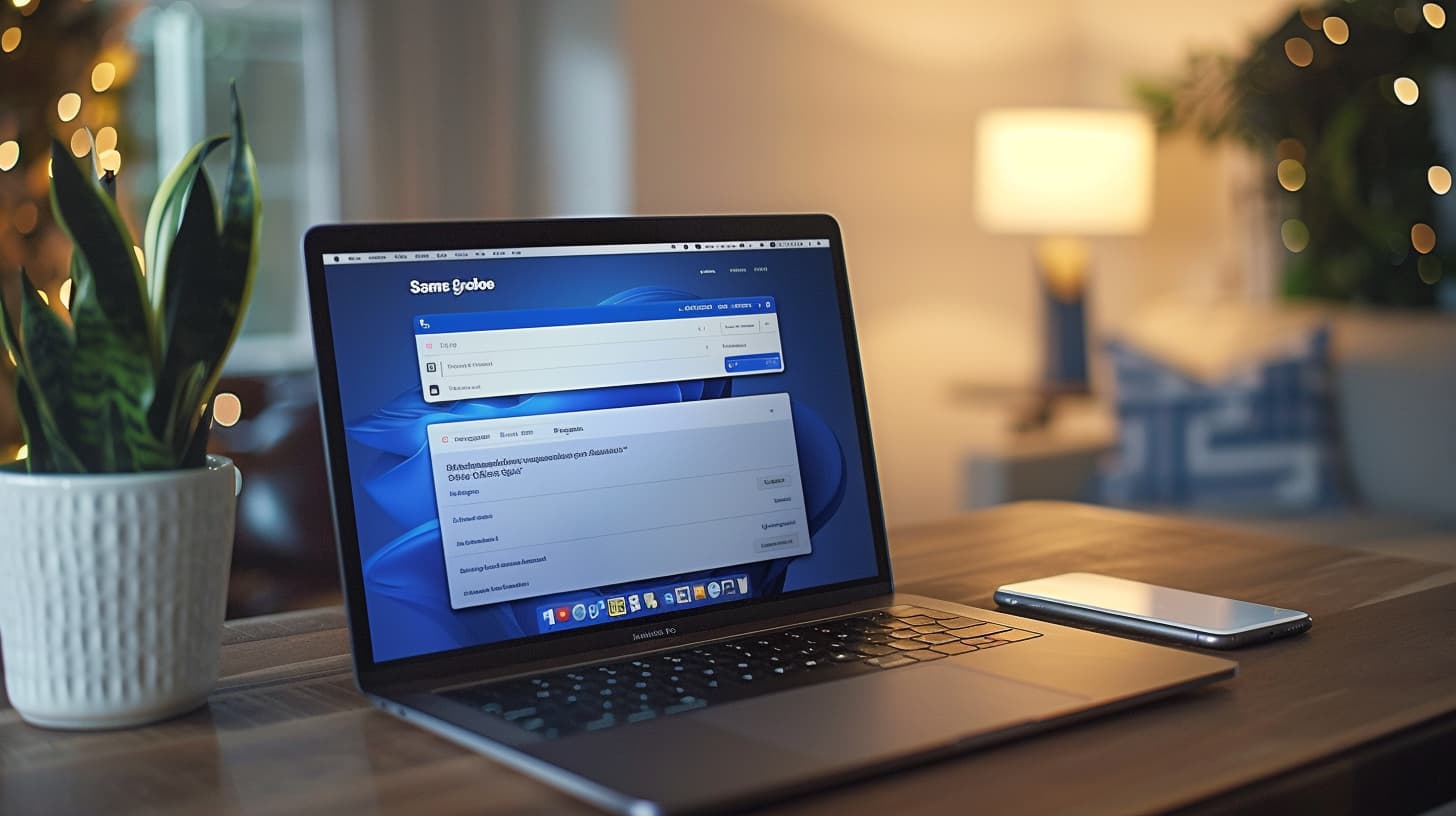Man people don’t know the differences between outstanding balance vs. principal balance. The terms outstanding balance and principal balance are among the most confusing items you’ll encounter when reviewing your debt paperwork. This is especially true when both terms have similar values. If you’ve been wondering what these terms mean, you’re not alone.
An outstanding balance indicates how much of your original debt is left to pay, inclusive of interest. In contrast, the principal balance shows how much of your original loan amount you owe, not including interest. It’s crucial to understand both terms before accepting a loan.
Read on to learn more about these terms, what they mean when they have the same value, and how they differ. This way, you won’t feel confused when assessing your current debt or planning future loan payments.
Understanding Principal Balance
Whether you like Kiplinger’s Personal Finance vs Money Magazine, both would cover the topic of principal balance. To help you understand the meaning of this phrase, let’s break down the various definitions of the term “principal” before we add “balance” to the mix.
Exploring the Different Meanings of the Word “Principal”
Many people struggle to understand the meaning of the term “principal balance” because the word “principal” can mean several things in the business/financial world. In the context of investments, principal refers to the amount of money initially invested in any given asset and doesn’t include accrued interest or earnings.
- For instance, if you deposit $10,000 in an interest-bearing account, your account balance could increase to $13,000 over several years. But your remaining amount of principal balance will be the $10,000 you initially deposited. The added $3,000 would be attributed to accrued earnings. Therefore in this example, the total amount of payoff is $13,000.
When debt instruments are involved, the term principal refers to the sum of money the bond issuer borrows and promises to refund the bondholder when the bond matures. A bond’s principal may also go by the names face value or par value.
Typically, it doesn’t include any recurring interest payments, coupons, and accrued interest (even though the bond issuer has to pay these). Let’s take a look at a helpful example.
- If a 10-year bond with a par value of $10,000 is issued with semi-annually recurring coupon payments of $50, its principal will be $10,000, exclusive of the $1,000 value of coupon payments over its life.
Lastly, the term principal may be used in the context of borrowing to denote the amount of money initially borrowed by an individual or organization. The term “loan principal” is more commonly used than the word “principal” alone and applies to all debt types (including credit card balances, mortgages, and car loans).
Adding “Balance” to the Mix
So far, we’ve established that the term principal refers to the initial size of your loan. But when you introduce the word “balance,” the meaning expands a bit. That is, principal balance can mean the original size of your loan as well as the amount you still owe after paying off part of it.
To illustrate, let’s take a look at an example of principal balance.
- Suppose you take a mortgage loan of $50,000 and haven’t made any repayments. This amount can be termed as your principal balance. If you were to pay off $20,000, you’d still owe $30,000. This remaining debt would be your new principal balance.
Notice that our example didn’t mention anything like interest and loan fees that many lenders impose on loans or extra costs like taxes or insurance. That’s not by accident. Instead, it’s because the principal balance only has to with the original amount borrowed.
Additional charges imposed on the principal balance will still factor into your total monthly payments. It can actually put the borrower in a situation of proportion of loan balances to loan amounts is too high increasing monthly payments. However, there’s a method to it, which brings us to the next subject of discussion: the intricacies of how the principal balance works.
How Loan Principal Balance Works
The general principle of how loans work is that you reduce your principal balance with every periodical payment until you eventually get this value to zero (which means you’ve cleared your debt). However, not every dollar you pay goes to dwindling the principal balance.
Lenders usually allocate specific portions of your regular payments to paying capitalized interest and running down your principal balance. This is done through a loan amortization schedule, in which you’ll have access to track how much of each installment goes to paying the interest and how much is allocated to paying off the loan principal. Federal loans for student loans and financial aid work this way.
- To illustrate how this works in real life, let’s take a look at a basic example. Let’s assume you take out a loan of $10,000 on September 1st and agree to make regular payments of $500 on the 1st of each month. You make a down payment of $2,000 to open the loan, making your loan principal $8,000. Like all loans, yours comes with interest, charged at a rate of 4% per year.
- On October 1st, your principal balance will still be $8,000, but you’ll have incurred interest charges of $27 (i.e. $8,000 x (4% / 12)). If you make your $500 monthly payment, $27 of that amount will be used to cover your interest charges before the rest ($473) is allocated to lowering the principal balance.
This means that after paying the installment, your new loan principal balance will be $7,527 ($8,000-.$473). If we were to make an amortization table to reflect your first month’s payment, it would look like this:
| Payment Date | Size of Monthly Installment ($) | Amount Allocated to Covering Accrued Interest ($) | Amount Allocated to Lowering the Principal Balance ($) | Principal Balance ($) |
| September 1st | $0 | $0 | $0 | $8,000 |
| October 1st | $500 | $27 | $473 | $7,527 |
Important: Take note of this example because we’ll use it for illustration whenever necessary throughout the rest of this post.
Before we round up this section, let’s briefly discuss one exception to the general rule of splitting monthly payments between accrued interest and the loan principal.
This exception comes in the form of zero-coupon mortgage loans, where regular payments cover only the interest (and not both the interest and the loan principal). This means that with this kind of loan, your installments do nothing to reduce your principal loan balance during the loan repayment period.
Types of Principal Payments
There are differences between outstanding balance vs. principal balance. A principal payment refers to the portion of your monthly installment that goes to reducing your principal balance. Depending on your agreement with the lender, there are two ways to repay your loan:
- Even total payments
- Even principal payments
Let’s discuss each in greater detail to demonstrate how they affect the size of your principal payments.

Even Total Payments
An even total payments schedule means that you pay equal installments throughout the loan repayment period. The above example demonstrates this: you pay $500 each month, which is then allocated between reducing your principal balance and covering the accrued interest. Even total payments make it easier to budget by paycheck for them.
When a sizeable loan is amortized, the more significant part of the initial installments is allocated to covering accrued interest and the remainder to lowering your loan principal. That’s because when the principal is large, it automatically means more interest.
As you chip away the loan principal through monthly payments, you’ll notice that the interest shrinks with each payment, and more of your payments will go back to dwindling the principal balance.
To demonstrate this, let’s go back to the above example.
- Suppose you make another monthly payment on 1st of November. The interest accrued throughout October would be calculated as follows: $7,527x (4% / 12)= $25.09. Since paying off the interest takes priority, the amount allocated to reducing the principal would be $474.91.
- As you can see, the accrued interest for November has decreased from $27 to $25.09. Meanwhile, the amount allocated to reducing your loan principal has increased from $473 to $474.91. If we fully amortize the loan, this trend continues until the principal gets to zero.
To demonstrate this trend, let’s enter the first three payments in the amortization schedule below.
| Payment Date | Size of Monthly Installment ($) | Amount Allocated to Covering Accrued Interest ($) | Amount Allocated to Lowering the Principal Balance ($) | Principal Balance ($) |
| September 1st | $0 | $0 | $0 | $8,000 |
| October 1st | $500 | $27 | $473 | $7,527 |
| November 1st | $500 | $25.09 | $474.91 | $7,052.09 |
| December 1st | $500 | $23.51 | $476.49 | $6,575.60 |
Even Principal Payments
With even principal payments, your principal payment remains constant throughout the life of the loan. That means that your total monthly installment fluctuates based on accrued interest, unlike in an even total payment schedule where it remains constant.
For illustration, let’s revisit the above example, but with a slight difference of even principal payments of $500 each month. If we prepared an amortization schedule to show the first three payments, it would look like this:
| Payment Date | Size of Monthly Installment ($) | Accrued Interest ($) | Principal Payment ($) | Principal Balance ($) |
| September 1st | $0 | $0 | $0 | $8,000 |
| October 1st | $527 | $27 | $500 | $7,500 |
| November 1st | $525 | $25 | $500 | $7,000 |
| December 1st | $523 | $23 | $500 | $6,500 |
To show you how we arrive at the above figures, let’s calculate the size of the monthly payment for October 1st.
- We know that the principal payment is $500, so we start by keying it into the “principal payment” column.
- Since the principal payment is $500, it reduces the principal balance to $7,500, so we enter that amount into the “principal balance” column.
- To determine the size of the monthly payment needed to cover both the principal payment and the accrued interest, we calculate the amount of interest accrued between September 1st and October 1st as follows: $8,000 X (4%/12)= $27.
- Finally, we add the accrued interest to the principal payment to get $527, a figure representing how large of an installment you need to pay to cover both the interest and the principal payment.
Note: The process is the same for the rest of the installments.
Understanding Outstanding Balance
Having covered principal balance exhaustively, let’s delve into the second part of today’s discussion: outstanding balance. Outstanding balance refers to the amount you owe on any interest-bearing debt, including credit cards.
In the case of credit cards, it most commonly indicates the amount you owe from credit card purchases. It’s sometimes referred to as the current balance, too, and can include:
- Fees
- Interest charges
- Purchases
- Balance transfers
- Cash advances
Typically, credit card companies put a spending limit on every credit card issued. This limit determines your credit utilization ratio, as well as how much you have left to spend.
To find out the latter, you only need to subtract the outstanding balance from the credit limit. Ideally, you want to keep the outstanding balance on your credit card at a value that translates to a credit utilization rate of 30% or less. A high credit utilization ratio can affect your overall personal leverage ratio as well.
In other types of debt, the outstanding balance at any point in the life of the loan consists of three elements:
- The remaining loan principal. As we saw earlier, this decreases with every installment. If you fail to pay or delay the installment, the overdue loan principal may be added to the remaining principal, increasing subsequent interest charges.
- Accrued interest. Interest on installment loans is incurred daily but accumulated (AKA accrued) and only charged when you pay your installment.
- Overdue interest. Overdue interest only exists if you delay your monthly installment and refers to the due interest that is yet to be paid.
With some loans, overdue interest is capitalized into your principal balance if you miss an installment. “Capitalized” means that the interest/fees are added to your principal balance, which increases the subsequent interest levied on the remainder of the loan. If you use a revolving credit facility to fund purchases for your business, all of these issues above are considered.
If you need a better credit utilization ratio, you might have to fix your credit. There are ways how to repair your credit yourself which will have an affect on your credit utilization ration.
What’s the Difference Between Outstanding Balance and Principal Balance?
The main difference between these types of two balances is that the principal balance indicates the remaining balance exclusive of interest or fees. In contrast, the outstanding balance denotes the total loan amount owed, including interest and costs.

These two amounts can be the same if no interest or fees have been applied to the loan yet. Usually, the principal balance equals the outstanding balance when you pay your monthly installment because the interest for the next month hasn’t yet accrued.
To illustrate, let’s go back to our previous example.
- It’s October 1st, and your loan principal is $8,000. You’ve accrued interest worth $27 and are about to pay your installment. Your principal balance at this point is $8,000, and your outstanding balance is $8,027 (principal balance plus accrued interest). Let’s assume you opted for even total payments in your loan terms.
- The moment you pay the $500 installment, $27 of that amount will cover the interest, while $473 will go to reducing your principal balance to $7,527. If you were to check your outstanding balance and principal balance immediately after making your monthly payment on October 1st, they would both be $7,527 because no interest has accrued yet.
If your bank showed you both balances on October 8th, for instance, the outstanding balance would be slightly higher than the principal balance because it would include a week’s worth of interest. That’s because every day after your last installment, interest accrues. The reason we never notice the interest accruing is because it’s cumulated and charged at the end of the month. Tracking your loan by day is just one of the advantages and disadvantages of online banking.
Does It Really Matter if You Don’t Know the Difference Between Outstanding Balance and Principal Balance?
In a nutshell, yes. Understanding the mechanics behind the principal balance and the outstanding balance can help guide your financial decisions by:
Helping You Choose the Right Loan Payment Schedule
As we saw earlier, there are two ways to approach loan payments: even principal payments and even total payments. What we didn’t discuss earlier, however, is that the type of approach you choose affects how effectively you can plan your finances.
When you choose an even principal payment scheme, you have a clearer idea of how much of your monthly installment will reduce your principal balance. This makes it easier to plan how long it’ll take to repay the loan, which isn’t always easy when your debt has a floating interest rate.
On the other hand, an even total payment scheme makes it easier to know how much money to set aside each month to keep up with your loan installment. This helps avoid late/missed payment penalties.
Helping You Manage Credit Card Debt More Effectively
Subtracting the outstanding balance from your credit limit shows you how much you have left to spend on your credit card. This difference is what’s used to calculate your credit utilization rate. Also termed as the credit utilization ratio, this rate is calculated by dividing your total credit card debt by your available credit and then multiplying the result by 100.
Now, the available credit is the amount of money you have left to spend, which you get by subtracting your outstanding balance from your credit limit. With a bit of math, you can use this knowledge to manage your credit card expenses such that you keep your credit utilization rate below 30%.
Since your credit utilization rate accounts for 30% of your total FICO score, keeping track of the outstanding balance on your credit cards reflects positively on your credit score. There are also ways how to improve your credit score which would allow for a larger credit utilization ratio.
Is it Worth it To Pay Off Your Outstanding Balance?
Deciding whether or not you should pay off your outstanding balance is a question worth asking. There are two differnt schools of thought on this matter:
- one that says outstanding balances should be paid off
- and another that argues outstanding balance should not always be paid off.
The first vital school of thought is based on the idea that when you pay your outstanding balance, it frees up more money to put towards other investments or savings goals. A retirement or an emergency fund is an example. You could use other tools such as income share agreements (if terms are better) to reduce your monthly amount if you can’t afford to pay off your balance in full.
However, paying down debt also means spending less money now for future earning potential, which might not make sense if you need to take out loans later in life because your credit score isn’t high enough yet.
On the flip side, there’s also agreement from some experts who argue against any effort being made to pay off outstanding debts without considering the outstanding balance.

It all comes down to your budgetary guidelines, situation, and goals for the future. There’s no one-size-fits-all answer on this topic.
For instance, if you have a credit card with an outstanding balance that has been there since before 2008 and doesn’t pose any risk of defaulting because of its high-interest rate, then paying off the outstanding debt might not be as important or valuable as investing in retirement funds. Retirement savings is important especially if you are unfamiliar with what happens if you don’t save for retirement.
On the other hand, you may need to build up some liquid assets if you currently don’t have enough emergency savings. You can do this by reducing your outstanding balance now; you should consider taking out loans instead so you can reduce your outstanding balance while also saving more money for emergencies later on.
How Many People Pay Off Their Outstanding Balance Early?
According to data from Experian, about 27% of all credit cardholders paid off their debt before the end of the year in 2015. For the same period in 2016, there was a slight increase in those willing to pay off their credit cards early; about 36%. Experian also found that people with outstanding balances of less than $1,000 are more likely to pay off their balance early.
It’s difficult to say what the percentage is for those who end up paying off their outstanding balances early without knowing how Experian defines an outstanding balance. Still, it seems that people with smaller outstanding debts might be more inclined to do so.
FAQs
Is Outstanding Balance Bad?
Outstanding balance is not always bad. You may have an outstanding balance if you are waiting for someone to pay you back or if you are considering this an installment plan with a lender.
Why Does Outstanding Balance Matter?
Outstanding balance matters because outstanding balances, when added to your total credit limit, help determine the percentage of available credit you are using.
What is the Outstanding Credit Card Debt Limit?
The outstanding credit card debt limit is the total outstanding balance on your credit card.
What is a Good Outstanding Balance?
A good outstanding balance falls below 30% of your total available credit limit, which can help you maintain a high FICO score.
Summary
The difference between the outstanding balance vs principal balance is interest and fees (if any). The former includes interest and fees, whereas the latter only indicates that the original loan amount is left to pay exclusive interest/fees.
There are two ways to repay a loan (even principal payments and even total payments) and understanding each option can help you settle your debt more effectively. Tracking the outstanding balance on your credit cards might also help you boost your credit score.



